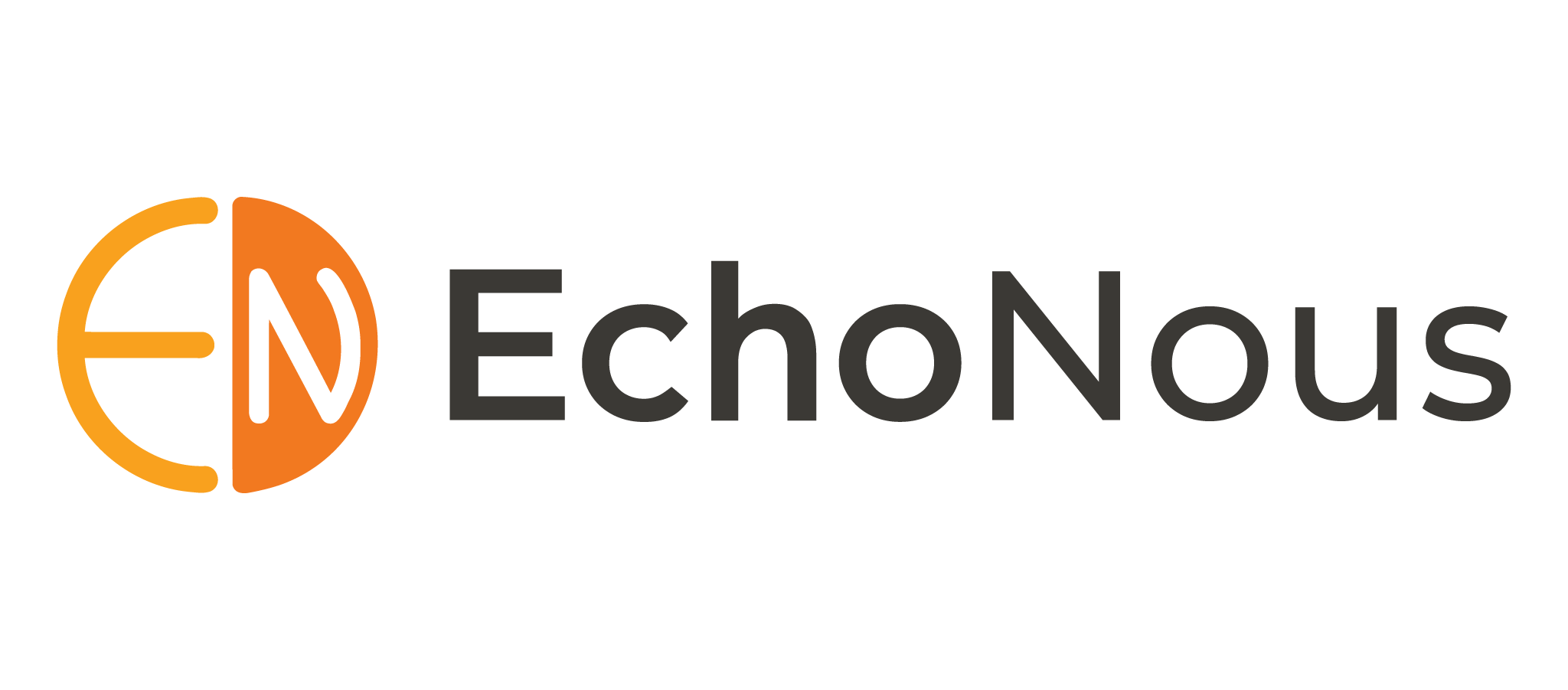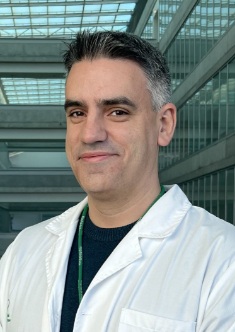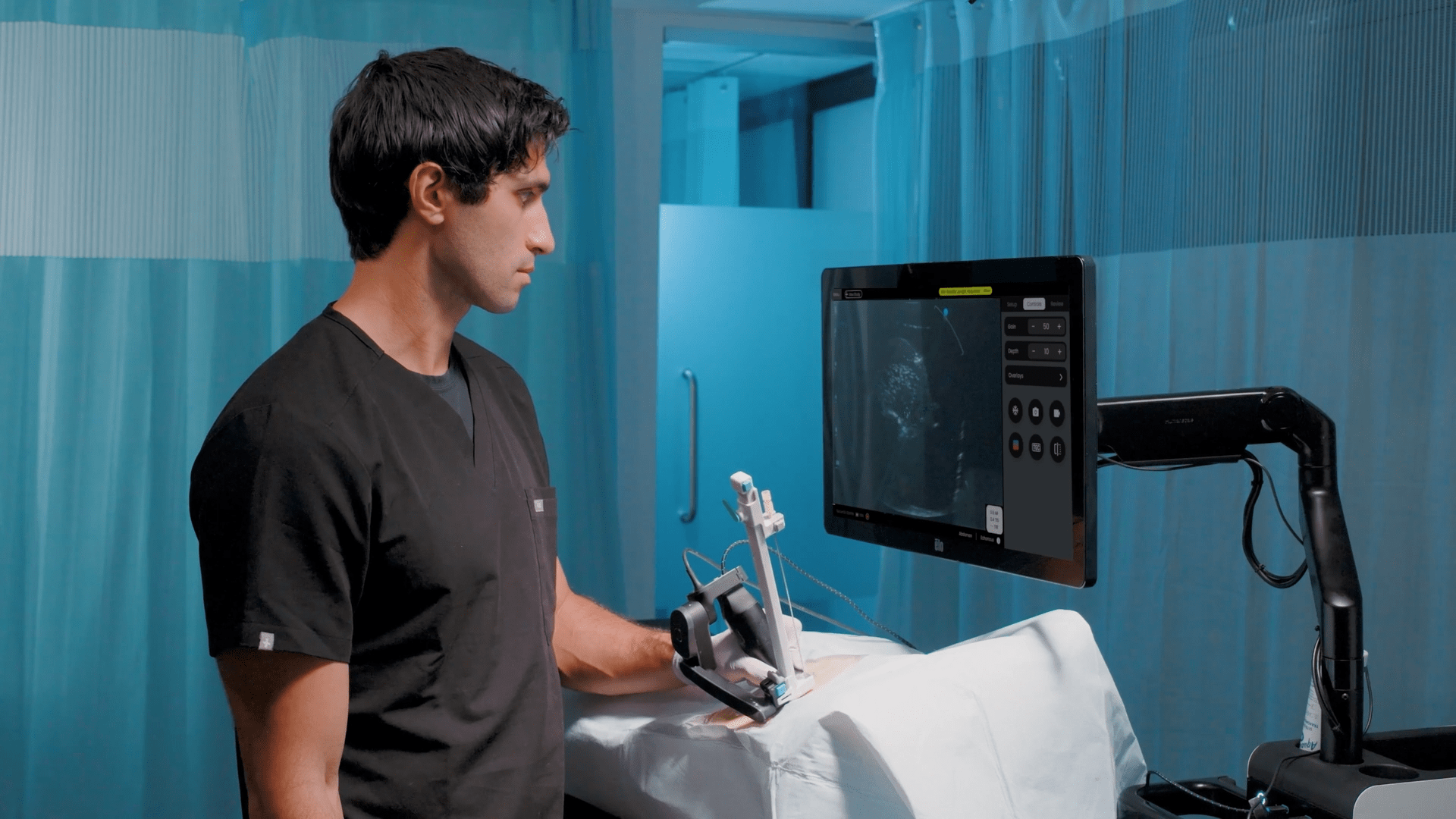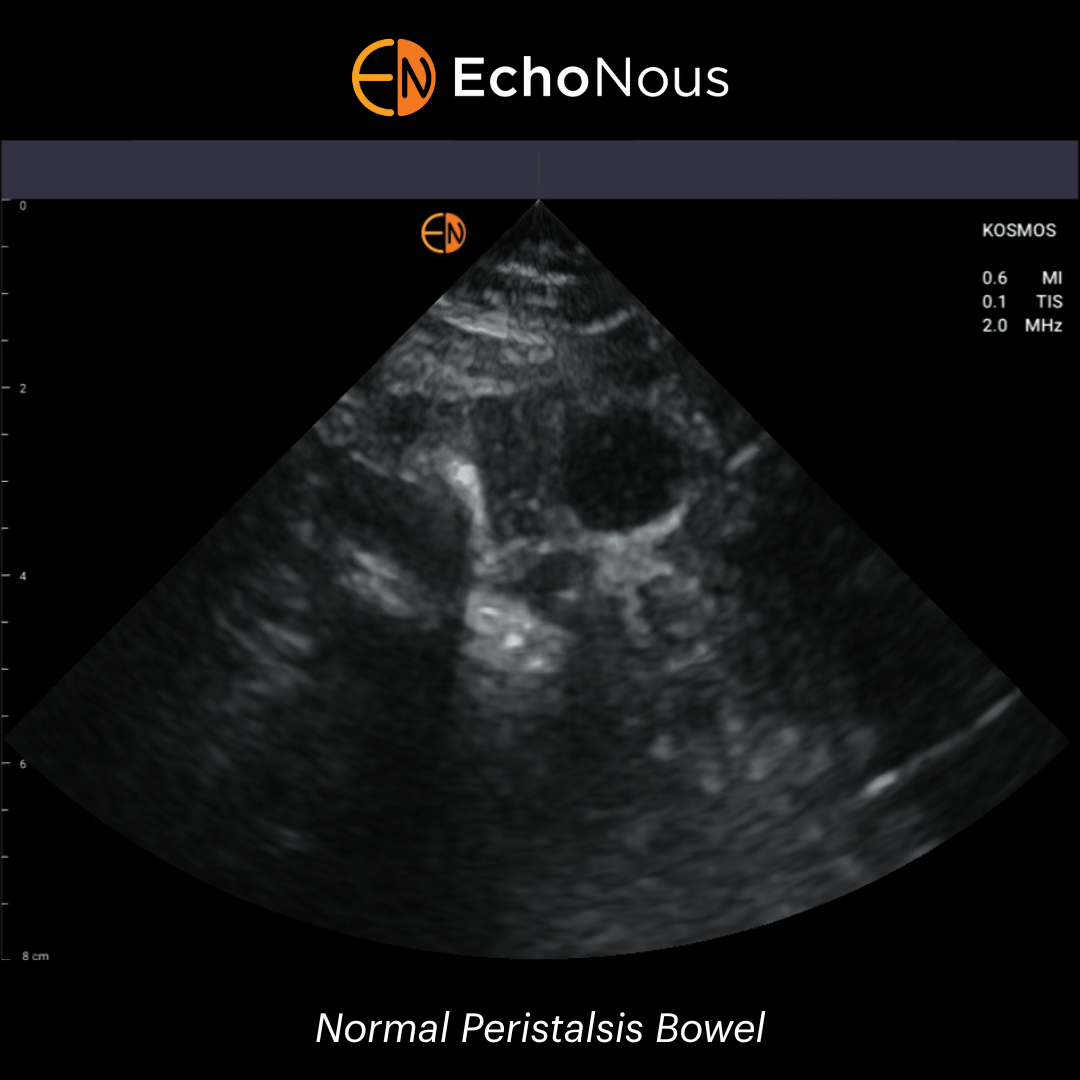Kosmos and the Point-of-Care Ultrasound Revolution in Acute Care
Point-of-care ultrasound devices improve acute care by assisting physicians in making accurate and effective diagnoses while saving time and money.
As physicians attempt to treat patients in an increasingly complicated world, the tools they use matter more than ever. Precision and time are critical, and there’s little room for error. It’s no wonder that doctors are turning to point-of-care ultrasound (POCUS) system, Kosmos, to give them an upper hand.
Kosmos combines, in a single phased array probe, three vital signals—digital stethoscope, EKG, and ultrasound, enabling doctors to understand what is occurring within the cardiac cycle, using transformative AI to improve technique and guide the physician. The combination of those three signals—three of the most important in medicine—gives Kosmos an edge that no other point-of-care ultrasound device offers.
“It has probably the best resolution for images among any handheld on the market right now, especially for cardiac and abdominal applications,” Dr. Michael Blaivas, an emergency physician and professor of medicine at the University of South Carolina School of Medicine, says. “The AI applications—the very accurate automation of the ejection fraction calculation, which is basically how well is your heart pumping—it is a critical question in many medical settings.”
Point-of-care ultrasound devices have transformed acute care, providing doctors with the ability to diagnose patients bedside without needing to call for costly and time consuming confirmatory testing, or having to rely only on antiquated techniques. And Kosmos is leading the pack.
Kosmos is revolutionizing point-of-care ultrasound, thanks to its unparalleled AI technology. The system’s compact size and simplicity streamlines workflow in acute care, granting physicians both speed and space that wasn’t previously available. These developments make Kosmos a key learning tool for medical students and residents as well.
“The reason I prefer to use Kosmos is I find the quality of the images are fairly similar to my card-based ultrasounds,” says Dr. Trent She, assistant ultrasound director of the emergency department at Hartford Hospital and an assistant professor at the Yukon School of Medicine. “In times when space is very tight, I pull out my Kosmos and I use it on patients who are in respiratory distress or are critically ill.”
How Kosmos changed day-to-day work in the ER
Doctors have always had myriad ways to diagnose patients. But the quickest methods aren’t perfectly accurate, and the most conclusive methods aren’t always expedient. Confirmatory testing like blood work, X-Rays, and CT scans could take up to an hour to return results—time better served treating those afflicted—and physical exams, while expedient, didn’t always provide precise answers in patients with multiple potential reasons for shortness of breath.
“You had to rely a lot on the physical exam,” says Dr. She. “But the good thing about ultrasound with Kosmos is it’s easily done at the bedside, it’s repeatable, it’s not hard to pick up, and you can make important decisions with just a modicum of ultrasound education.”
With Kosmos, physicians can move rapidly to diagnose and treat patients without waiting on confirmatory testing or radiology results. That means faster answers and better treatment without putting patients at risk.
“I personally think that in every critical ill patient that is hypo-sensitive or short of breath, especially any patient that comes in cardiac arrest, you should always be doing ultrasounds,” says Dr. She. “Some handheld ultrasounds, you get maybe 75, 80 percent of what you need. I would say, with Kosmos, I get 90 percent of what I need to know from a Kosmos ultrasound.”
Dr. David Tierney, director of the internal medicine residency program at Northwestern Hospital, in Minneapolis, Minnesota, was an early adopter of POCUS, first opting to use it in 2004. His hospital became one of the first to use it robustly in 2009, giving him experience with everything from “the original Sonosite devices, the GE Phillips Lumify, and the Butterfly iQ device.” But since using Kosmos, he hasn’t looked back.
“It’s a new piece of technology that adds something to an otherwise boring physical exam of tapping and listening to people’s body,” Dr. Tierney says.
Kosmos can save lives
The ability to have quick, accurate results without having lengthy waits has allowed Dr. Tierney to administer lifesaving care.
“I’ve used everything from the beginning of point of care ultrasound time, through Kosmos. I’ve switched totally over to Kosmos.” says Dr. Tierney. “Without question, it saves lives, because you get to a life-threatening diagnosis quicker. It was born in emergency medicine.”
Dr. Tierney is not alone in his praise of POCUS, and specifically Kosmos, for use in emergency care. Dr. Blaivas says that thanks to Kosmos, he’s been able to make some treatments safer than they would have been previously, and also administer certain treatments that wouldn’t have been possible at all without it.
“Diagnostically, it’s expanded my capability tremendously to evaluate patients, make critical diagnoses,” Dr. Blaivas says. “From the treatment side, it allows me to do procedures that are essential for patients during their care, safely.”
That diagnostic boost doesn’t just mean care can be administered more safely either; it can happen more quickly, too. Kosmos has allowed Dr. Tierney to spend minutes getting results for patients that typically would have needed to wait hours.
“Traditionally, we’d run through a whole bunch of different things this could be caused by. And now you can take about a minute and forty seconds and there’s five things on the list.” he says.
That speed is essential for physicians to administer life-saving care as quickly as possible. But expediency isn’t the only benefit Kosmos can offer doctors in high-pressure situations. Unlike other point-of-care ultrasound devices on the market, Kosmos is tablet-based, offering readouts on the Kosmos Bridge—a highly secure and proprietary tablet. That means it takes up less space bedside than other competitors while ensuring patient’s data stays safe.
“I can’t tell you, during a critical resuscitation, how many people are in the room, and how infrequently an ultrasound machine fits in that room,” says Dr. She. “Our Sonosites, they’re nice machines, don’t get me wrong, they give you high-quality scans, but they have a massive footprint. It takes up almost an entire two thirds of a side just to bring an ultrasound to the side.”
Space constraints create bottlenecks, and bottlenecks can threaten lives. Because Kosmos is able to produce accurate results, and quickly, without taking up valuable bedside real estate, it can be a vital tool in a doctor’s arsenal.
“If it’s during a resuscitation where I don’t have that much space and I need to know about what’s going on with the heart right now, or in tight spaces where need to I do a procedure, like getting an IV, I typically use my handheld or portable ultrasounds,” Dr. She says. “Those areas, I definitely use Kosmos for.”
In situations like the ones many hospitals are now facing while treating patients suffering from COVID-19, Kosmos’s space-saving bonus is enormous. Especially considering the value of an ultrasound in treating patients who potentially have developed myocarditis as a result of battling the disease.
“With COVID, we want as few people in one of these rooms as possible. That means a lab technician, that means a nurse, physician, a radiologist, an ultrasound tech who’s going to go in and spend 40 minutes doing a cardiac echo on someone two feet away from them,” Dr. Tierney says. “So the ability for the person who’s already going in the room, who has to also get those images, and not have to send a second person in to get those images a lot of the time, has been a huge benefit.”
Kosmos can help keep people out of the ER who don’t need to be there
Kosmos doesn’t just help doctors, though. The benefits for patients are many, and they start at providing comfort in knowing exactly what’s wrong, and why they’re feeling under the weather, without adding to their anxieties. Kosmos’s AI capabilities give physicians an upper hand when diagnosing and treating patients that other point of care ultrasound devices don’t offer. They can see more patients, because they’re more efficient, or they can spend the time they save by having better, more detailed interactions with those they provide care for.
“We use it in our outpatient clinic every day for people who have a stuffy nose and say, ‘I think I’ve got a sinus infection, doc. Can you give me some antibiotics?’” Dr. Tierney says. “And you can have a 10-minute conversation about why they don’t need antibiotics for their runny nose, or you can put an ultrasound on it and show them that they don’t have any sinus fluid, and they’re way happier with the latter, and it reduces our antibiotics use in our clinic by 50 percent.”
By using Kosmos, Dr. Tierney says he’s able to avoid administering unnecessary treatment to patients who may not need it. Instead, thanks to the speed and precision of Kosmos, he can get them out the door, and feeling better in record time.
“The way we do it right now is, ‘I don’t know what’s wrong, but I’m going to treat you for the three possibilities that could be wrong,’” says Dr. Tierney. “Kosmos lets you say, ‘No, which one of those three actually is going on,’ and lets you treat one of them and do it upfront.”
Because Kosmos allows physicians to more accurately diagnose patients at their bedsides, and faster than using traditional methods, fewer patients have to undergo further testing, which means less time occupying suites in the ER, and lower burdens on patients themselves.
For Dr. Tierney, who often sees patients traveling from the northernmost reaches of Minnesota, or in the Upper Peninsula of Michigan for care that can’t be administered at their rural hospitals, Kosmos and point of care ultrasound offers another advantage. Rather than having to send patients hours away to the nearest big city to visit hospitals with classic ultrasound technology, doctors in rural facilities can diagnose them just a few steps from their homes.
“Sometimes you have to [travel to a bigger city], but a good chunk of the time, with the point of care ultrasound, you can get that answer right up at home, and you don’t have to travel in a snowstorm to go get that answer,” Dr. Tierney says.
The power of AI in medical education
Doctors have plenty of options when it comes to point of care ultrasound devices, but only Kosmos can offer top level AI technology. Hospitals like Dr. Tierney’s, which have used point-of-care ultrasound for more than a decade, have been able to utilize the technology in teaching as well, ensuring the next generation of physicians understands the best way to treat their patients.
Residents at Northwestern Hospital have been taught how to use point-of-care ultrasound for years, and thanks to it’s AI, Kosmos helps move the needle and build their confidence, giving young medical students way more freedom and independence that previous generations had. That’s vital. As Dr. Tierney says, there’s a bottleneck in training thanks to a low number of mentors who can teach medical students and residents at patient’s bedsides. Kosmos’s AI allows learners to get over that initial hump without needing someone watching over their shoulder for hours on end.
As Dr. Nelson Schiller, a prominent cardiologist at the University of California San Francisco who specializes in using ultrasound images of the heart’s movement to diagnose and treat heart disease says, Kosmos’s AI adds “a million set of eyes” to provide confirmation of what he’s seeing, making treatment safer than ever. That reassurance, thanks to AI, can make a world of difference for medical students.
“The current AI applications are focused on teaching someone how to get the images, teaching someone what the right image is, and then answering some core basic questions that most people do without AI,” Dr. Tierney says. “So the current AI applications are focused on that user group. It moves their needle a lot.”
Thanks to Kosmos’s AI, medical students can learn how to do point of care ultrasounds faster than they can with other devices. For those unfamiliar with POCUS, the Kosmos AI is the difference between a tough learning curve, and a quick learner. The Kosmos Torso can be a valuable teaching tool, using three vital signals—high performance ultrasound, an integrated ECG, and a digital stethoscope—in real time, teaching medical students and residents anatomy, and physiology.
“To have devices across tons and tons of abilities and video game backgrounds, you have to have something that’s got a nice user interface that’s easy to interpret,” Dr. Tierney says. “You can pick it up and you can very quickly learn how to use it.”
When Dr. Tierney’s hospital began using point of care ultrasound, they were an anomaly. People were puzzled, and frequently asked what they were doing, and why. Now, he says, there isn’t a resident who comes through his doors who isn’t expecting to learn how to use it. Even more than that, the technology excites them.
“Think of the old town doc who had a bag and did everything himself—that kind of got lost once CT scans came,” Dr. Tierney says. “I think [point of care ultrasound] makes people excited, and it makes you feel like you’re a little bit more of an independent physician.”
Kosmos, Dr. Tierney says, is a device medical students are looking for in a residency program, because they know the technology is the future.
“I think the forward looking potential is to arm almost any emergency care provider with Kosmos to provide some very high end diagnostic capability that is done essentially automatically,” says Dr. Blaivas. “That person—a physician, a mid-level provider, a nurse, or a med tech—could use Kosmos, getting instructions from the device and adjusting the transducer, the ultrasound probe, and then it’ll guide them through everything else. It acquires the images automatically for them, makes functional calculations and assessments, and suggests diagnoses. Kosmos is the future of emergency care.”




